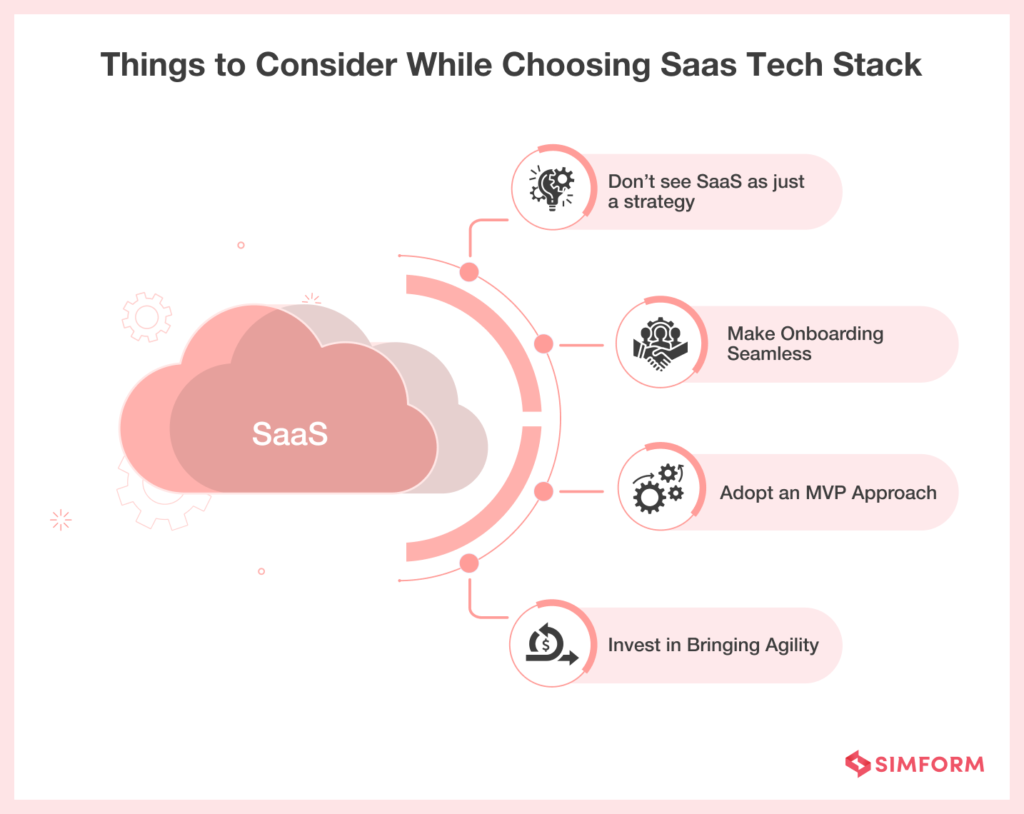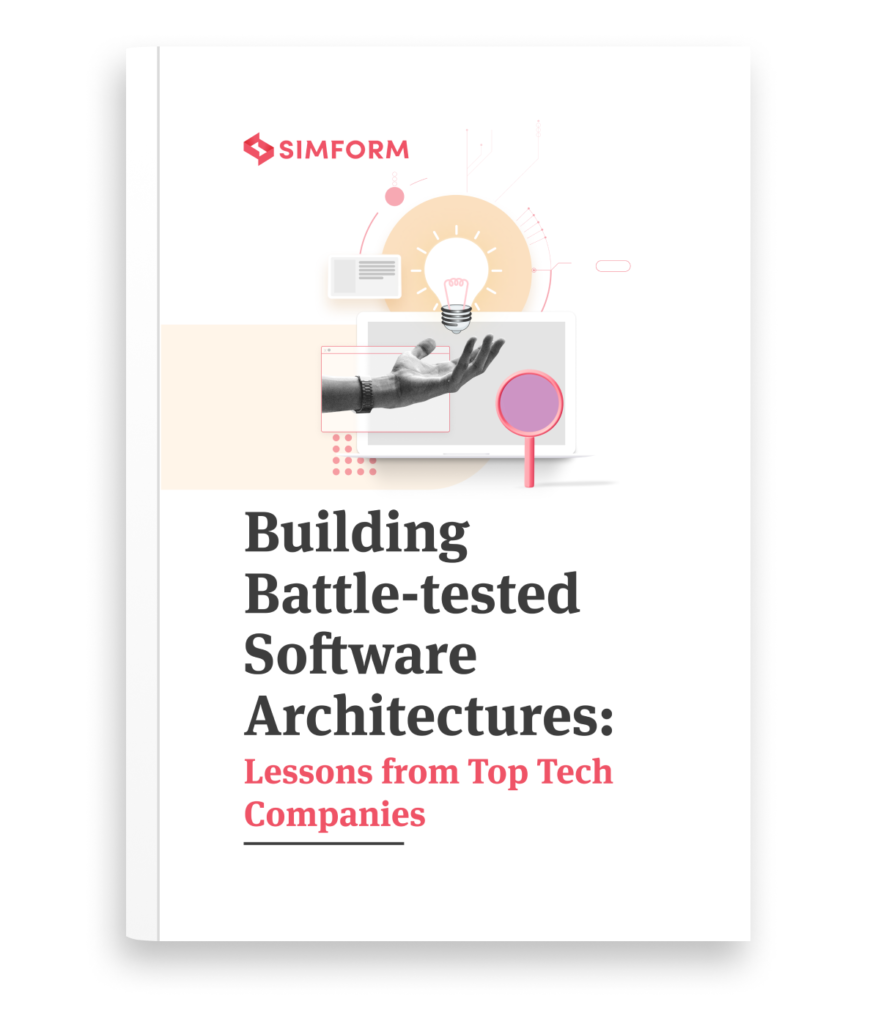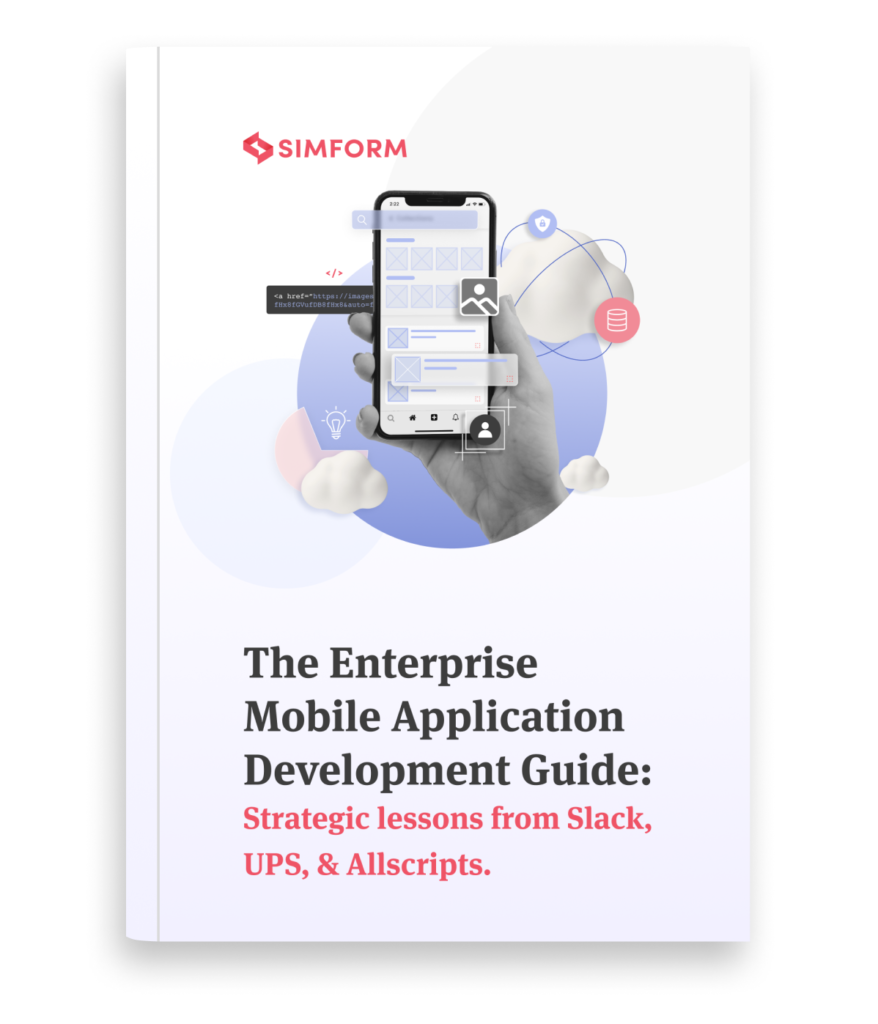Today, there’s an app out there for almost anything. Spotify, Zoom, Netflix, Google Docs, and Hubspot are some widely used apps. But have you ever thought about what is common in these apps? All of them are popular SaaS-based products.
Popular ride-hailing giant Uber is a noteworthy example of a SaaS-enabled app solution. To cope with a huge chunk of ride requests, Uber first adopted a microservice model in 2014. Furthermore, it has created a React component library called Base Web to streamline the overall designing process.
So how to choose the right tech stack for SaaS? If you are looking for the answer, this blog is the right place to start with. But before we dive deeper, let’s have a quick overview of the SaaS tech stack.
What is a SaaS tech stack?
A SaaS tech stack is a combination of technologies used. It is a set of frameworks, libraries, software languages, and infrastructure used to develop and launch a fully-functional platform.
If you have the best sales team, product team, or customer success team, all of them are of no use without a suitable tech stack. The tech stack is your software’s foundation that defines the entire development process. Consequently, it directly affects the time and money you put in for development.
First, let’s understand the types of SaaS architecture as it’s better to have a tech stack guided by your software architecture.
SaaS architecture
SaaS or Software-as-a-service is a licensing and delivery model where a software company or vendor hosts an application over a cloud server so that users can access it with the help of web browsers.
There are two types of primary architecture for SaaS app development.
- Single-tenant architecture – Users do not need to share their data in the case of single-tenant architecture as it lets them use just an instance of software rather than the entire one.
- Multi-tenant architecture – On the other hand, the multi-tenant architecture enables SaaS tech companies to use a single instance to support multiple servers. Here each user’s data is isolated, which eventually increases visibility.
Out of these two, building a SaaS application on a multi-tenant architecture is recommended more than often as it offers many benefits like cost-saving, code reusability, seamless upgrades, and more.
Want to know more about SaaS architecture?
Meanwhile, microservices as an architectural style is gaining a lot of attention among IT experts and changing the way SaaS works.
Microservices architecture for SaaS application development
Microservice architecture is a service-based architectural style where you can independently develop, test, and deploy different modules of an application. It would reduce costs of hosting by splitting your SaaS app into microservices. Thanks to the microservices frameworks, it becomes easier to isolate faults in your SaaS app. As a result, the entire framework will not get affected, even with a small failure in some modules.
You can use popular microservices frameworks like GoMirco, Micronaut, Spring Boot, Eclipse Vert.x, etc., to save money and time in SaaS app deployment. Different orchestration systems like Azure Container Instances, Azure Kubernetes Service (AKS), or Azure Container Apps can manage your microservices to scale up your SaaS application.
Key components of the SaaS tech stack
The tech stack for SaaS businesses is further divided into two parts, the first one is front-end, and the second one is back-end. React Native, Angular, Vue, Swift, etc., are some popular front-end languages, while Python, Django, Flask, Java, Perl, etc., are some popular back-end languages.
Front-end side
The front-end deals with the coding part of an app which the user interacts with. It consists of different links, buttons, tables, lists, sliders, inputs, forms, etc. Here are the three main technologies necessary for the functioning of the front-end –
-
HTML
HTML is the core component of almost every web project. It allows developers to structure the overall web page content. Moreover, HTML is useful for website developers to specify the kind of data a web page will display to the users.
-
CSS
Cascading Style Sheets or CSS can help you style the written document in a more polished way that users can view easily. What’s more, CSS can give a stylish and responsive feel to a web page. As a result, there is no need to reload the entire page to see the final result.
-
JavaScript
JavaScript makes an app or website more interactive by enabling the developers to create attractive sitemaps, pop-ups, tabs, contact forms, and much more. In addition to this, Javascript can dynamically update a webpage as per the user’s action.
Back-end side
The back-end can be considered the core aspect that drives the website or a mobile application and integrates the logic into it. In the back-end structure, a web server can accept the request generated by the browser. Then it will process such requests according to the coded logic and revert the relevant content data.
The back-end consists of servers, databases, languages, frameworks, etc. Let us look at them one by one –
-
Programming languages
Some programming languages used for back-end web development include Python, Java, PHP, C++, etc.
- Python has a simple syntax and coding process that speeds up development.
- PHP is perfect for a SaaS startup to empower its website’s back-end.
- C++ integrates all the components of C with additional features for large web applications and video games.
-
Database
We can call a database a systematic collection of records, databases, and files. There are many popular databases that are widely used by developers like Redis, MongoDB, MySQL, and PostgreSQL. Also, the database contains SQL and NoSQL as well.
-
DevOps tools
The DevOps tools used for back-end development are Docker, Kubernetes, Jenkins, Ansible, ELK Stack, Prometheus, Grafana, etc.
-
Server
The widely used servers by back-end developers are IIS, AWS, Google Cloud, Apache, Nginx, DigitalOcean, etc.
-
AI / ML
You can use accurate data analytics empowered by advanced algorithms that can drive value for your SaaS-based solution in the long run. These types of services are available via Microsoft Azure, Google Cloud, AWS, etc. You can even build AI/ML-enabled services using various R, Go, and Python libraries on your own.
As a recognized Microsoft Solutions Partner for Data and AI on Azure, Simform brings deep expertise in helping SaaS companies design and implement scalable AI/ML solutions tailored to their goals.
-
APIs
An API can combine multiple repetitive steps of the software development process. You can call it a bridge between a client and a server as it facilitates the server to fetch relevant data and share the same to the database. These interconnected APIs can heavily affect numerous services. So if any of them fails, such utilities will not function properly.
-
Event brokers
An event broker is an appliance, middleware solution, or SaaS empowered app that is used to communicate events between consumers and event producers in a predefined pattern. Developers often prefer to use popular frameworks like RabbitMQ or Kafka to streamline the back-end events in a CQRS architecture, complex back-end structures, and distributed sources of different data.
How Azure powers a modern SaaS architecture
Here’s a reference architecture by Azure that illustrates how SaaS companies can design scalable, secure, and cost-efficient multi-tenant platforms.

Azure Front Door routes traffic globally, with Microsoft Entra ID managing authentication. Application Gateways forward requests to App Services hosting the business logic. The data access layer runs on Azure Kubernetes Service (AKS) and connects to SQL Elastic Pools and Azure Cache for Redis. Virtual Networks secure communication, while the multi-region setup ensures high availability and low latency—ideal for global SaaS apps.
Tech stack of popular startups
vGIS (by Meemim)
vGIS is a mixed-reality SaaS platform that lets utility and construction crews “see” underground pipes, cables, and other spatial assets through HoloLens and mobile devices.
This mixed-reality SaaS platform’s tech stack comprises various components that power real-time 3D visualization and global data access:
Programming languages / frameworks:
- Built with .NET for business logic and Unity for real-time 3D rendering, allowing one codebase to drive both cloud services and holographic visuals.
Database:
- Azure Cosmos DB (globally distributed, low-latency NoSQL) stores each customer’s asset data in region for millisecond-speed queries.
- SQL Server handles relational data needs, ensuring complex GIS relationships and transactional operations remain ACID-compliant.
Cloud infrastructure:
- Runs on Azure Virtual Machines, alongside services such as Azure Search and real-time networking engines; Azure’s on-demand scale lets vGIS onboard a new tenant in under a minute and render 2.5 million objects without performance loss.
Back-end:
- .NET-based services on VMs handle GIS processing, search queries, and geographic computations.
- A real-time networking engine pushes live updates (e.g., asset location changes) to all connected devices.
Front-end:
- A Unity / Windows Mixed Reality client for HoloLens and tablets overlays 3D asset models onto the physical world.
- Data sync and authentication run via Azure in the background, giving field crews instant, secure access to up-to-date spatial information.
Embrace
Embrace is a Dutch multi-tenant digital-workplace platform—combining social intranet and omnichannel CRM—used by housing associations, healthcare providers, and government agencies.
This “AI-First” SaaS platform’s tech stack comprises modular services and managed Azure infrastructure to deliver isolated, scalable tenant environments:
Programming languages / frameworks:
- Microservices written in .NET Core, Node.js, and Java, all unified behind an Apollo GraphQL gateway so each team can pick the best language while exposing a single API surface.
Database:
- Elasticsearch (Elastic Stack) powers fast search and analytics across messages, files, and records.
- Squidex Headless CMS provides flexible content storage and real-time keyword search for intranet pages and digital-workplace assets.
Cloud infrastructure:
- Deployed on Azure Kubernetes Service (AKS) with infrastructure defined in Terraform.
- One-click scripts spin up isolated clusters per tenant, and AKS’s autoscaling ensures each environment grows or shrinks with demand.
Back-end:
- Dozens of containerized microservices run on AKS; data and logic converge in the Apollo/GraphQL layer, supporting weekly releases and AI features powered by Azure service
Front-end:
- Web and mobile clients are built with React (browser) and React Native (iOS/Android), delivering a consistent UX through Azure’s global edge network.
Get in touch with our in-house SaaS experts
Things to consider while choosing SaaS tech stack

Here are a few impactful strategies that can help you make the right choice of tech stack for your next SaaS project. Let’s explore them one by one –
1. Don’t see SaaS as just a tech strategy
SaaS has offered an on-demand approach and a single to the traditional business to digitize their offerings. There is no such restriction to location; anyone across the globe can access it easily. The SaaS model makes it easier for service providers to utilize different resources like servers, storage, and networks per product requirements.
Additionally, the SaaS business model allows companies to integrate the cloud infrastructure layer containing security policies to manage user permissions, access, and identities. So, this is how SaaS can help enterprises to bring digital transformation.
2. Have a seamless client onboarding process
No matter how good and advanced your SaaS solution will be, it is of no use if your customers find it difficult to use. Therefore, you need to ensure that your SaaS onboarding process is faster, smoother, and easy to understand.
Let’s take the example of Hubspot. It asks its users about themselves and the need for the product via different questions. This microsurvey can help Hubspot understand customer preferences so that they can provide tailor-made experiences.
3. Adopt an MVP approach
You can opt for the MVP to grab the potential opportunity and chart out the SaaS product map to meet customer needs more effectively. It is the first version of a product that can assist you in discovering what your prospects require.
Based on customer feedback, you can re-work your app’s approach or offer more market differentiation through this MVP. As a result, you can get a brand new perspective on the success of your solution.
4. Invest in bringing agility
SaaS technology stack can facilitate users to be agile and respond to market demands more quickly and efficiently. Spotify is the best example of this. It has divided its employees into Squad, Tribe, Chapter, and Guild.
Squad works on creating and improving the Android client and building the Spotify Radio experience. The collective unit of different Squads is called Tribe, which mainly deals with back-end infrastructure. This Tribe further gets divided into Chapters and Guilds with people working on a similar competence segment.
Ready to build your SaaS tech stack?
The choice of a tech stack plays a game-changer role in the success of your web or mobile application. Therefore, choosing the right tech stack for your SaaS solution becomes an important thing. You need to consider many important factors like the right SaaS tools, frameworks, and cloud solutions that can help you expand your business over a long period. In this guide, we have explored SaaS stacks used by prominent businesses and the considerations to choose the perfect one for your SaaS product development.
However, it would be advisable to consider that the tech stack chosen by you will impact your app’s features and overall performance. So if you are looking for further assistance in choosing a tech stack or want to know more about it, Simform is the best choice for you. Feel free to reach us today to learn more about our services.

